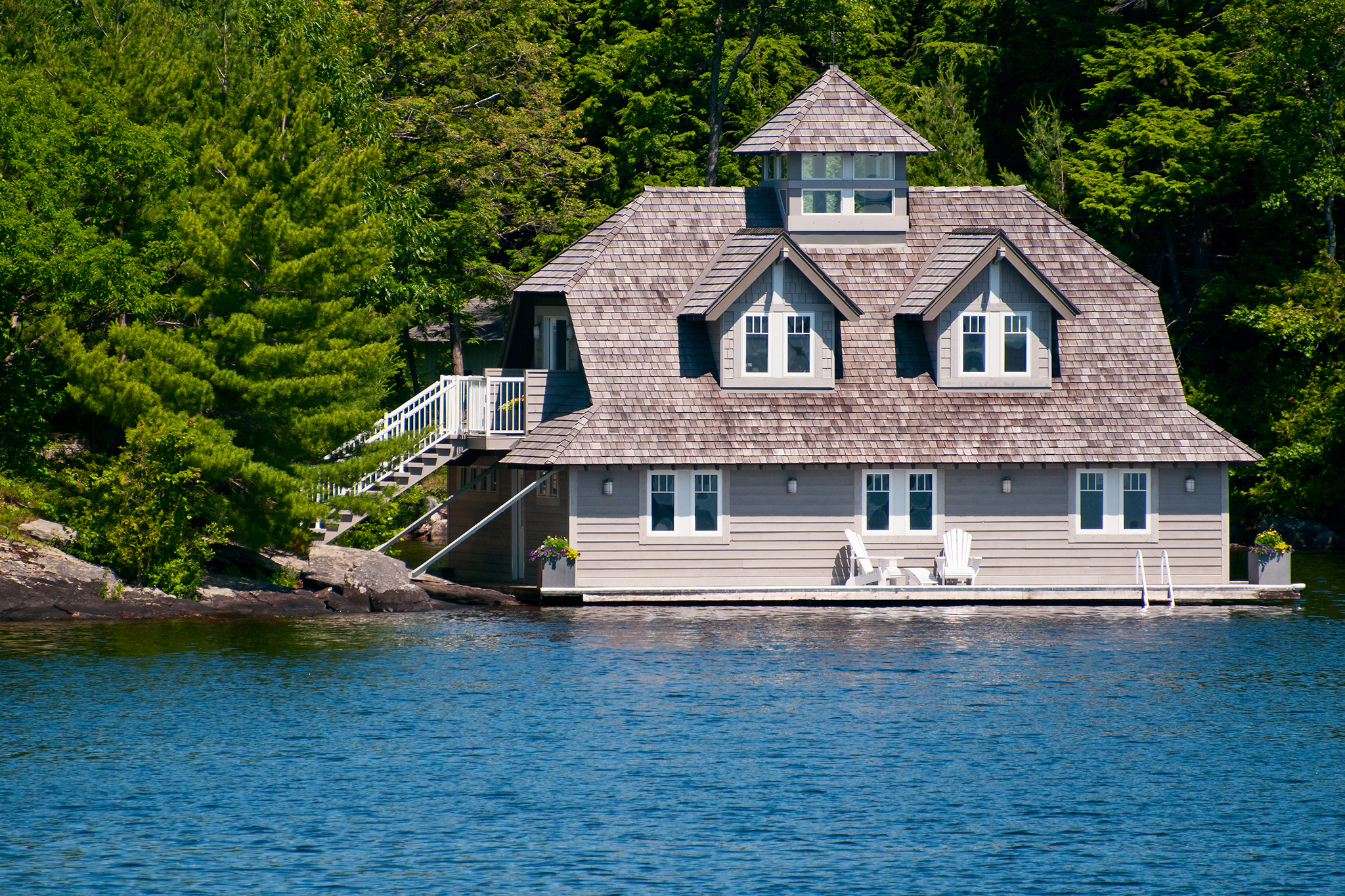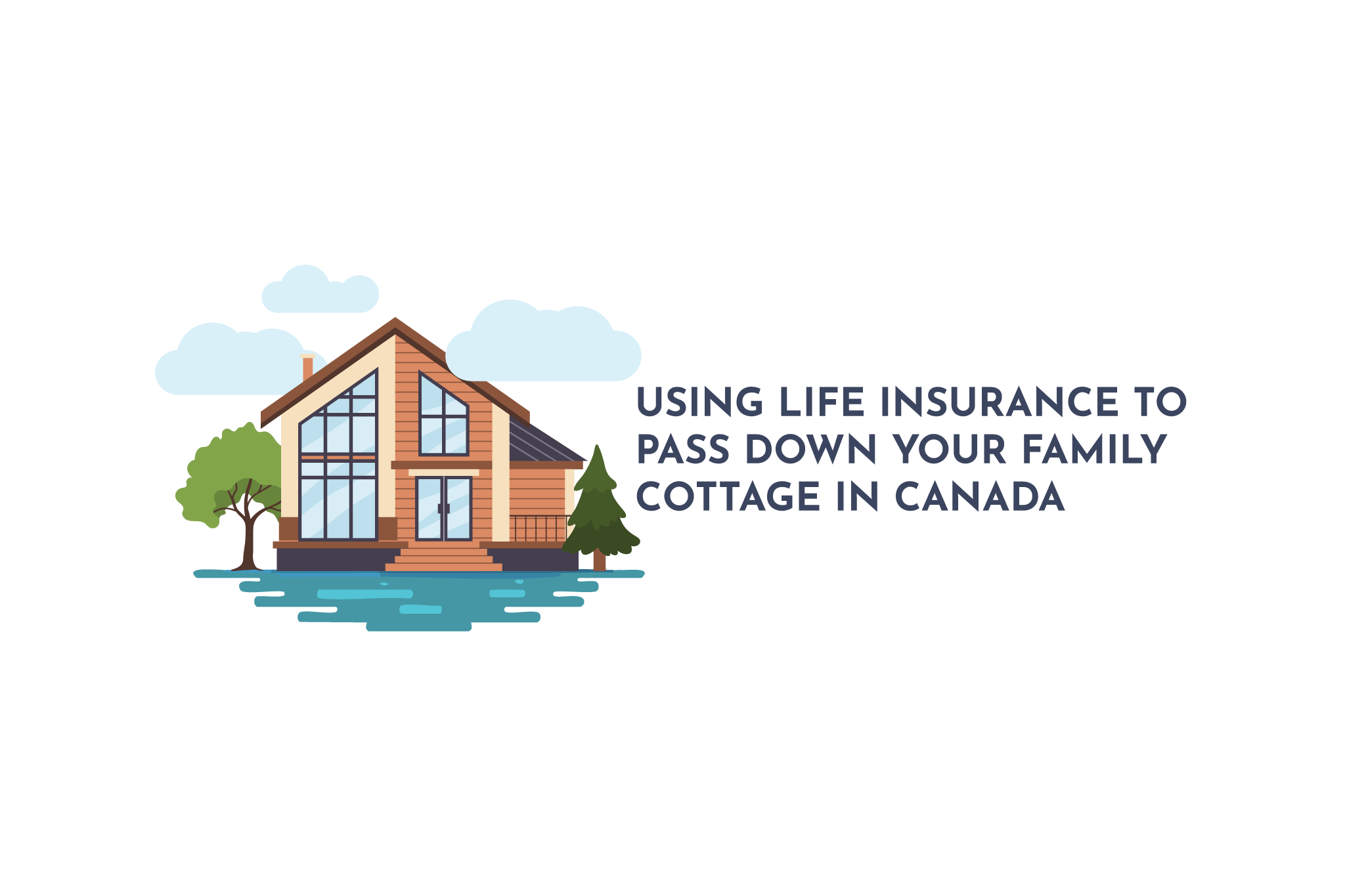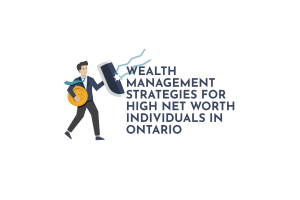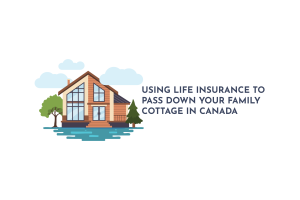One of the enduring images of Canadian life is that of a child leaping off a dock into a lake surrounded by wilderness. No matter where you are in Canada, you are likely familiar with the idea of a family owning a retreat where they can get away from it all. Depending on where you live, that retreat might be called a cottage, a camp, a cabin, a chalet, or, if you are on Cape Breton, a bungalow. Although the names differ regionally, the feeling is the same.
The cottage (I am in Ontario, so that is what we call it) is a place where family memories are made, traditions are built, and a strong sense of connection is felt. This feeling is priceless. Unfortunately, many cottage owners face a financial reality when the property changes hands. Canadian tax rules allow for the sale of your principal residence without triggering taxable capital gains, but this exemption does not apply to secondary properties like cottages.
As a result, many families are confronted with a large capital gains tax bill when the cottage passes from one generation to the next. In many cases, the only way to cover the cost is to sell the property. There are, however, alternative solutions. We have put together a guide on how life insurance can be used as a tool to protect your family’s cottage.
In this article:
- Capital Gains Tax – How does it Work
- How Capital Gains Affects Cottage Owners at Their Death
- The Solution – Using Life Insurance to Preserve the Family Cottage
- Choosing the Right Type of Life Insurance Policy
- How to Structure Your Cottage Insurance Plan
- A Case Study
- Advantages: Legacy, Liquidity, and Peace of Mind
- Key Considerations To Note in Estate Planning and Inheriting a Cottage in Canada
- Preserve Your Cottage Legacy with Strata Wealth
Capital Gains Tax – How does it Work
There are many different types of income in Canada, and how much tax is triggered for taxpayers varies depending on what type of income it is. For many cottage owners, the capital gains tax is the one that creates the issue when they pass away. To make sure we are all on the same page, here is a primer on how capital gains works upon the death of a taxpayer.
When someone dies, the Canada Revenue Agency (CRA) has a rule known as the deemed disposition. This rule states that the deceased person is considered to have sold all of their assets at fair market value at the time of death. A capital gain (or loss) is the difference between what you paid for an asset and what it is worth when you sell it. What you paid for it is called your Adjusted Cost Base (ACB), and the sale is done at Fair Market Value (FMV).
There are allowances to increase your ACB above your purchase price if you made significant improvements to the property, but these need to be tracked and documented. Your capital gain will be the difference between the ACB and the FMV.
When it comes to taxation, there is something called the inclusion rate. This is the portion of the gain that you have to include as income and pay taxes on. Currently (late in 2025), the inclusion rate is 50%. There was an announcement that there was a change coming to this amount in a recent federal budget but this was not followed through on. That budget is a great reminder though that the tax rules are always subject to change based on the rules laid out by the federal government.
How Capital Gains Affects Cottage Owners at Their Death
Losing someone you love is always difficult. While you are dealing with the emotional weight of losing someone close to you, there can also be the added pressure of significant financial decisions that need to be made. If the person who passed away owned your family cottage, that pressure can be even greater.
To understand why, you need to know about the concept of “deemed disposition.” This is a tax rule that considers you to have sold everything you own at fair market value at the moment of your death. Any taxes owing are calculated based on these deemed disposition values, even though the assets have not actually been sold at that exact time.
For example, imagine a family cottage purchased for $50,000 with a fair market value of $3,000,000. That results in a capital gain of $2,950,000, which creates a taxable amount of $1,475,000. Excluding all other assets, this would trigger a tax bill of just over $745,879 The deceased person’s terminal tax return would include at least that much in taxes owing.
As a beneficiary of the estate, you must ensure that there are sufficient funds available to pay this tax bill. Unfortunately, one of the only ways many families can cover the taxes owing on the capital gain from a cottage is to sell the cottage. This is clearly not the desired outcome, so let us look at ways to prevent it.

The Solution – Using Life Insurance to Preserve the Family Cottage
There is a way to protect the family cottage and prevent it from being sold after the owner’s death to pay the tax bill. That solution is to use life insurance to provide an infusion of cash upon the death of the owner, which can be used to pay the tax bill. There are some steps that need to be taken for this plan to work. Here is how you would put this idea into action:
- Estimate the tax exposure of your cottage. Your best bet is to have a discussion with an accountant about what this tax bill would be, but for a quick and easy estimate there are online calculators you can use, such as this one from Fidelity.
- Purchase the appropriate style of life insurance (more on this later) to cover the amount of tax that will be owed.
- Premium payments are made monthly or annually to keep the policy active.
- When you pass away, the death benefit is paid tax-free to your beneficiaries.
- The beneficiaries can then use the cash from the life insurance to pay the capital gains tax and avoid being forced to sell the property to cover the taxes owing on it.
Choosing the Right Type of Life Insurance Policy
You may have heard people debate over the years about what the best type of life insurance policy is. Term insurance versus permanent insurance has been the subject of never-ending debates. When you are building a strategy to preserve the family cottage through a well-designed estate plan, you need to make sure that you choose the right type of insurance.
With term insurance, you are purchasing coverage for a fixed amount of time. Most policies have renewals where the premiums increase (typically every 10 or 20 years) and then eventually expire. Many do not offer coverage beyond age 85. This makes term insurance poorly suited for estate planning because if you live beyond the age that the policy expires, there is no death benefit payable.
Permanent insurance is a much better choice for estate planning issues like capital gains on a cottage property. The coverage is guaranteed as long as you pay the premiums and will remain in force for your entire life, with no expiry date.
Remember, as with all residential real estate, cottage values tend to increase over time. This means that your future tax liability will increase as well. One effective solution for this is purchasing a Participating Life Insurance policy with paid-up additions. These policies offer policy owners the opportunity to see the death benefit in their policies grow while the premium remains the same. Set your plan initially to cover the current tax bill, and the internal growth of the policy will help offset the future increase in the tax bill.
Many people who are estate planning for a family cottage will find value in a permanent, joint-last-to-die policy. If you have a spouse and own the cottage together, the capital gains tax is not triggered until the second spouse’s death. Using a joint-last-to-die permanent life insurance policy covers both partners under a single contract and pays out when the last surviving partner passes away. This arrangement ensures that after both owners have died, your heirs will have enough money to meet the eventual tax bill and inherit the property debt-free.
The end result is that if you are looking to use life insurance as a tool to protect the family cottage, permanent life insurance is the best option for funding future tax obligations.
How to Structure Your Cottage Insurance Plan
Now that it is clear that permanent life insurance is the right type of policy to preserve your cottage, it is time to take action. Here are the steps to ensure a tax-efficient plan:
- Estimate Your Tax Exposure
Calculate the projected capital gain on your cottage with your financial advisor. This is done by subtracting the Adjusted Cost Base (ACB) {original purchase price + eligible renovation costs} from the Current Market Value (CMV). The difference becomes your capital gain. Now you need to apply the inclusion rate for that gain. As previously noted, the inclusion rate for capital gains in Canada is currently set at 50%. This is the amount on which you will owe tax. You can then calculate how much tax would be payable by using online calculators (for a quick estimate) or through a discussion with your accountant.
- Select a Policy Type and Coverage Amount
Next, choose a permanent life insurance policy with a death benefit amount equal to your tax estimate. If you own the cottage with a spouse, consider a joint last-to-die policy. If you are single, a single-life policy is adequate.
Afterward, decide between whole life (fixed premiums and guaranteed cash values) or universal life (flexible premiums and interest-based growth). Your income, tolerance for premium fluctuations, and long-term goals will guide this choice.
- Name Your Beneficiaries or Establish a Trust
You may name your children (or other heirs) directly, or set up an Irrevocable Life Insurance Trust (ILIT) to own the policy. An ILIT receives the payout and keeps the money out of probate, ensuring it goes where it is needed to cover the cottage’s tax bill.
Drafting an ILIT requires specialized legal expertise. Therefore, it is advisable to hire an estate lawyer to draft the trust documents and ensure they align with your will.
- Apply and Undergo Underwriting
When you apply for life insurance, you will need to undergo medical underwriting. The younger and healthier you are at the time of application, the lower your premiums will be. In joint last-to-die scenarios, insurers consider both partners’ health profiles, which may ease approval even if one spouse has minor health concerns.
- Pay Premiums and Review Annually
Pay premiums on time to maintain continuous coverage. Review your policy and estate plan with your financial advisor annually to ensure they align with your goals. If your cottage’s value has appreciated substantially or if tax laws change, consider purchasing an additional policy or applying to increase the face amount on your existing coverage.
- Communicate with Family
The best plans often fall apart if nobody knows they exist. Therefore, discuss your strategy with your heirs so they understand who will receive the cottage and where the funds to cover the taxes will come from. Open communication helps avoid surprises and family disputes when you pass away.

A Case Study
Let’s consider the hypothetical story of Alice and George, a pair of retirees with two grown children. In 1990, they paid $450,000 for their cottage in Muskoka, Ontario. Today it is worth $12,000,000, a gain of $11,550,000. Under current CRA rules, $5,775,000 of that gain is included as taxable income.
This means that their estate would owe roughly $3,047,652 in taxes when the last surviving partner dies (calculated here). The average tax rate for this amount of income is 53% in Ontario. Naturally, this couple wants their children to enjoy the cottage without struggling with capital gains taxes. So, what did they do?
Alice and George confirmed the projected tax liability by working with their chosen financial advisor. Then they purchased a $3,500,000 joint last-to-die whole life policy, naming their children as beneficiaries.
With George pre-deceasing her, upon Alice’s passing, the beneficiaries received the death benefit and spent $3,047,652 to cover the CRA bill, retaining the remaining balance to cover closing costs or maintenance and other, non-cottage related expenses such as funeral costs. As a result, the cottage was passed down intact.
Without the policy, their heirs would have faced the reality of needing to find a large amount of cash on short notice to pay the tax bill. Without proper estate planning, the only solution often is selling the property that created the gain in the first place. By using life insurance as part of their estate plan, Alice and George turned a looming tax burden into a tax-efficient legacy plan.
Advantages: Legacy, Liquidity, and Peace of Mind
Using life insurance to pass down a cottage in Canada to the next generation has several advantages for you and your loved ones:
- It Protects Your Family’s Legacy
Think about all the shared memories in the cottage: dinner with family, fishing trips with the kids, or teaching your children how to swim. These memories are priceless, and you want this asset to remain in the family, not sold off to cover taxes.
By arranging a permanent life insurance policy large enough to cover the expected tax bill, you are essentially “pre-paying” that tax. When you pass away, your children (or grandchildren) will retain the cottage legacy just as intended.
- The Policy Provides Instant Cash When It’s Needed the Most
Capital gains tax on a cottage becomes due within months of the owner’s passing, and the bill can be unexpectedly high. A life insurance payout provides a tax-free fund to help quickly cover debts. That way, your heirs will not have to scramble to raise large amounts of money during an already emotional period.
With the policy in effect, beneficiaries will have immediate cash to pay the tax bill.
- Peace of Mind for You and Your Loved Ones
Let’s be realistic, estate planning can be overwhelming. By setting up this life insurance plan now, you are doing everything you can to make sure that your family cottage will pass down seamlessly to your heirs.
You and your loved ones will have peace of mind knowing that the difficult financial part has already been handled. This way, everyone can focus on continuing those lakeside traditions and making new memories.

Key Considerations To Note in Estate Planning and Inheriting a Cottage in Canada
When it comes to protecting your cottage legacy, here are some tips to keep in mind before moving forward:
- Understand The Insurance Cost
The premiums paid under permanent life insurance can be significant, especially if you wait to apply when you are older or have health challenges. That is why buying coverage in your forties or fifties often makes the most financial sense.
As long as your health is good, insurers view you as a lower risk and offer lower rates compared to when you are much older (60 years or more). Also, remember that your premiums are not just another monthly bill; they are helping you prepay your future cottage tax in affordable installments.
- Plan Early
Like any residential property, cottages tend to appreciate over time. This also means the potential capital gains tax increases when such assets change hands. By setting your life insurance policy now, you lock in coverage based on the cottage’s current market value. If you choose a policy that has growth features built into it (such as Participating Life Insurance), your premiums are set based on your original death benefit amount. Keep in mind that this amount grows to help keep pace with the increasing tax burden of your cottage.
As property values climb, your tax exposure also grows, but your premiums remain tied to that earlier valuation. The earlier you begin, the more cost-effective the entire plan becomes.
- Review Regularly
Nothing stays the same forever. Tax rules and market values constantly change. Even global events, such as the US–Canada tariff wars, can have a ripple effect on your strategy.
It is therefore important to revisit your policy and estate plan at least once a year or whenever there is a major increase in your cottage’s value. A quick recalculation will inform whether to increase your coverage or add another policy. The last thing that you want to have happen is years worth of careful planning coming up short because there was a tax law change that wasn’t accounted for.
- Seek Professional Advice
Adding life insurance into your cottage inheritance plans means juggling tax calculations, legal documents, and insurance underwriting all at once. Every Canadian family’s situation is unique, and even a small oversight can result in big headaches later on.
As such, you should consider seeking professional counsel. We recommend consulting a qualified tax advisor to model your capital gains and premiums, an estate lawyer to incorporate the policy into your will or trust, and a licensed insurance professional to secure the most cost-effective coverage.
Together, they will create a plan that fits your unique circumstances, and your family can enjoy the cottage for generations without financial worries.
Preserve Your Cottage Legacy with Strata Wealth
There you go! Your cottage holds a lifetime of laughs, stories, and family traditions. Ensuring it remains a welcoming retreat for your family is one of the greatest gifts you can ever give. Using life insurance to pass on your cottage is a smart, tax-efficient solution that helps preserve those memories without the burden of the tax bills you know are coming.
At Strata Wealth & Risk Management Inc., we understand how much a cottage can mean to our clients. Our advisors take the time to listen and work closely with you to assess your cottage’s tax exposure, explore the right type and amount of insurance, and integrate this into your will or trust.
Do not leave your family cottage to chance. Contact us today to schedule your consultation and take the first step toward preserving your family’s memories for future generations.




